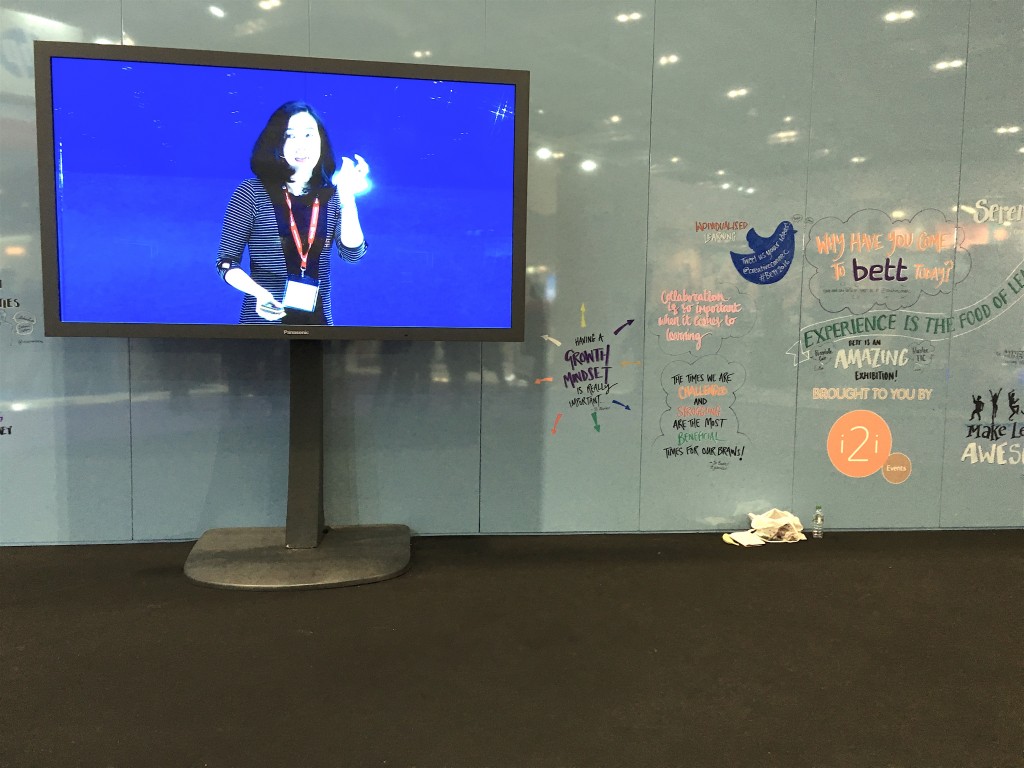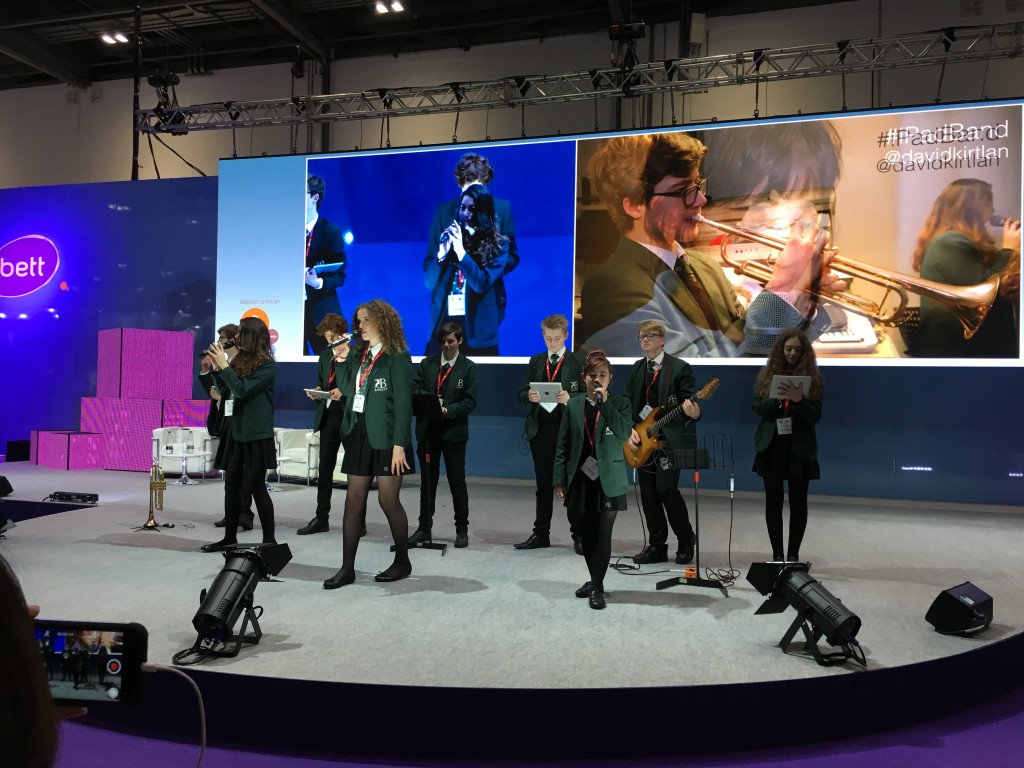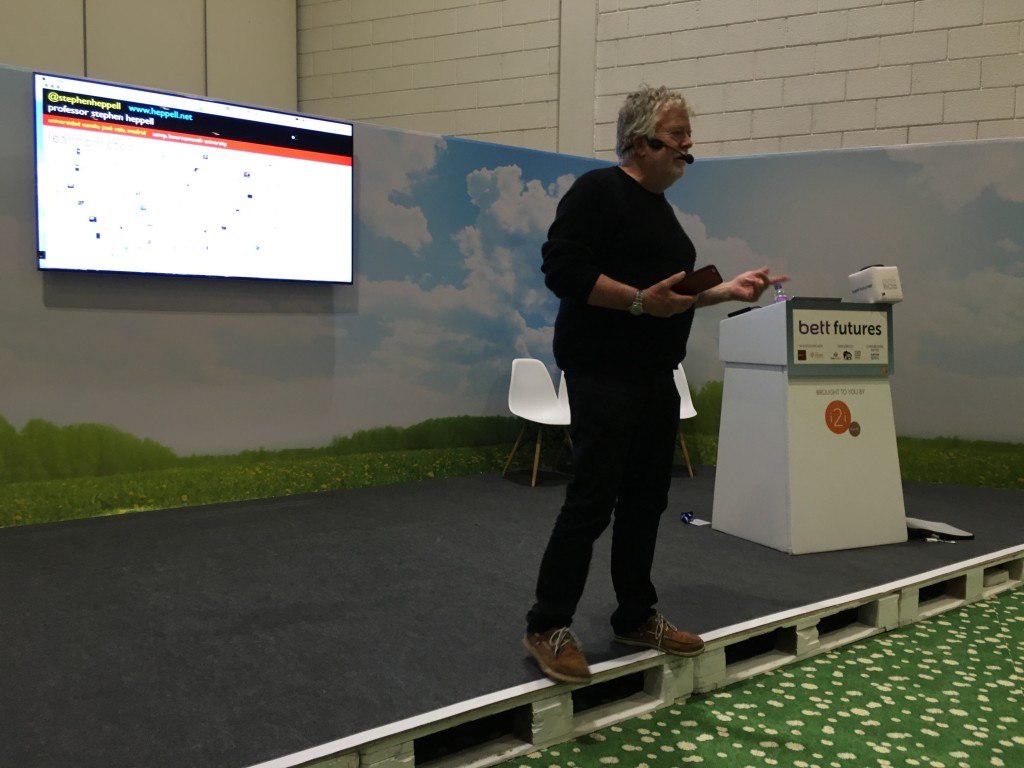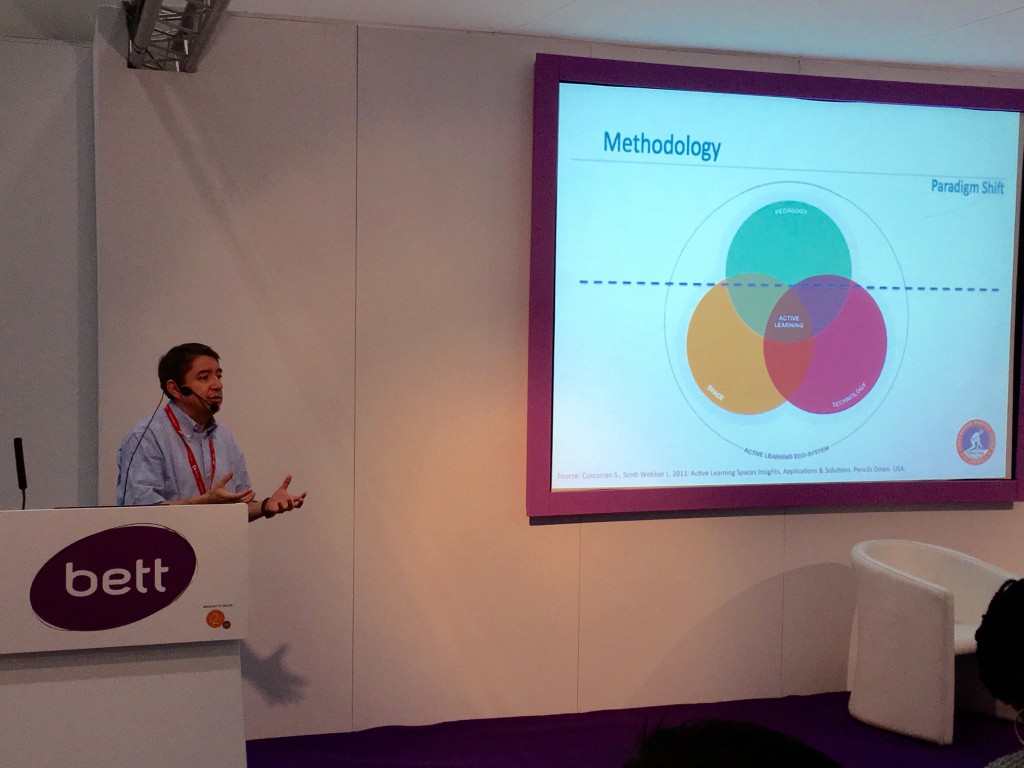
Now over 30 years old, The Bett Show is a huge London-based event for showcasing the uses of information technologies in education, spanning primary to tertiary and skills. A couple of LEaD staff were invited to participate in some of this year’s speaker sessions, myself included. This post covers some of what I got out of the rest of the day.
Getting settled in

It was my second visit to Bett, and the first as a presenter. The event is housed in ExCel, London Docklands, giving it the vast sprawling feel of an aircraft hangar, with hives of activity happening everywhere. My session was on at 12:00, so I began with orienting myself and getting a taste of what was on offer.
Every professional event like this has certain themes that emerge – I noticed a lot of immersive environments such as interactive floors on display. Clearly a move on from interactive whiteboards, though the stall staff I spoke to suggested that they weren’t really designed for HE at this point. What use would you make in your teaching of a learning space where different backdrops could be deployed, the walls and floors were interactive, and even smells could be conjured up?
I also noticed a lot of 3D printers around. One overheard talk questioned the very point of them, while another detailed how students had used them to team up with an organisation working with prosthetic limbs. The jury’s clearly still out on the pedagogical uses of this emerging technology.
Next, I went to scope out the HE Learn Live Arena, where I was scheduled to give my talk. Professor Rhona Sharpe from Oxford Brookes University was presenting some findings from work done on developing digital literacy. This included highlighting ‘five Ps for online learning’ (prioritise, personalise, participate, present and progress), as well as describing 53 activities for use in the online environment. These included activities to get started, to encourage collaboration, to make learning seem more personal, to encourage time on task, and activities for lifelong learning. See her full slides for the session here, including plenty of very useful ideas.
Tablets and collaboration

After my talk (see slides here), I met up with some old friends in the Bett Arena. A panel of primary and secondary school children were talking on the stage about their experiences as ‘Digital Leaders’ in their own schools. This covered how they support their peers and teachers with classroom technologies. It was staggering seeing children as young as six talking confidently on such a big stage about how they help and in some cases even train their teachers. What kind of world will they build in 20-30 years time, I wondered. You can get involved in conversations about Digital Leaders on Twitter using the hashtag #dlchat.
Following these confident youngsters was the iPad Band, another group of primary and secondary school children performing songs playing a combination of iPads and live instruments. Creator David Kirklan says that being part of this group ‘gives non-musicians the opportunity to take part in a performance’ as well as develop ‘transferable skills such as listening, collaboration, leadership (and) self management’. They gave an impressive performance and had me wondering how different my music education would have been with the addition of GarageBand on iPads at the time. David has apparently created these bands with students from primary to HE, so this approach clearly has a broad application.
On learning spaces
Aside from stalls and performances from young people, I also attended two talks related to learning spaces – my main area of work here at City.

Professor Stephen Heppell gave a talk on his Learnometer project, which is centred on ‘making learning better by measuring and improving physical environments’. This fascinating project combines hardware, software and analysed data to help learners perform better through the optimisation of their physical environments. He recounted tales of dispatching students with smartphones across their learning environments to monitor light levels and air quality via an app, and cited research that suggests 18-21 degrees as ‘optimum temperatures for learning’. I’m sure we’ve all sat in a warm room where we’ve struggled to pay attention, despite needing to! You can sign up to contribute or find out more about the Learnometer project here.

The day ended with a session from Alvaro Torres from Mariano Galvez University in Guatemala, talking about how his institution has taken old classrooms and converted them into flexible and creative learning spaces – in many similar ways to what we have done at City. This institution has achieved transformations in their traditional educational models through the application of modern pedagogies, advanced technologies and a collaborative use of space, which were described as collectively intersecting to create ‘active learning spaces’. Many of these new spaces will be familiar to some City staff who have taught in rooms with node chairs (e.g. A112, C306, D222 or ELG09) or circular tables surrounded by display screens (e.g. AG24a, ELG05 or R201). This case study was particularly interesting as Mariano Galvez University has also taken the step of reinvigorating informal learning spaces, where students might gather away from their timetabled classes yet still have their learning supported by the environment. See more of their university’s Center for Innovation in Technology and Education here (video plays in Spanish).
These are a few morsels from the broad-ranging smorgasbord that was Bett 2016. Might just head back for another helping in 2017.

